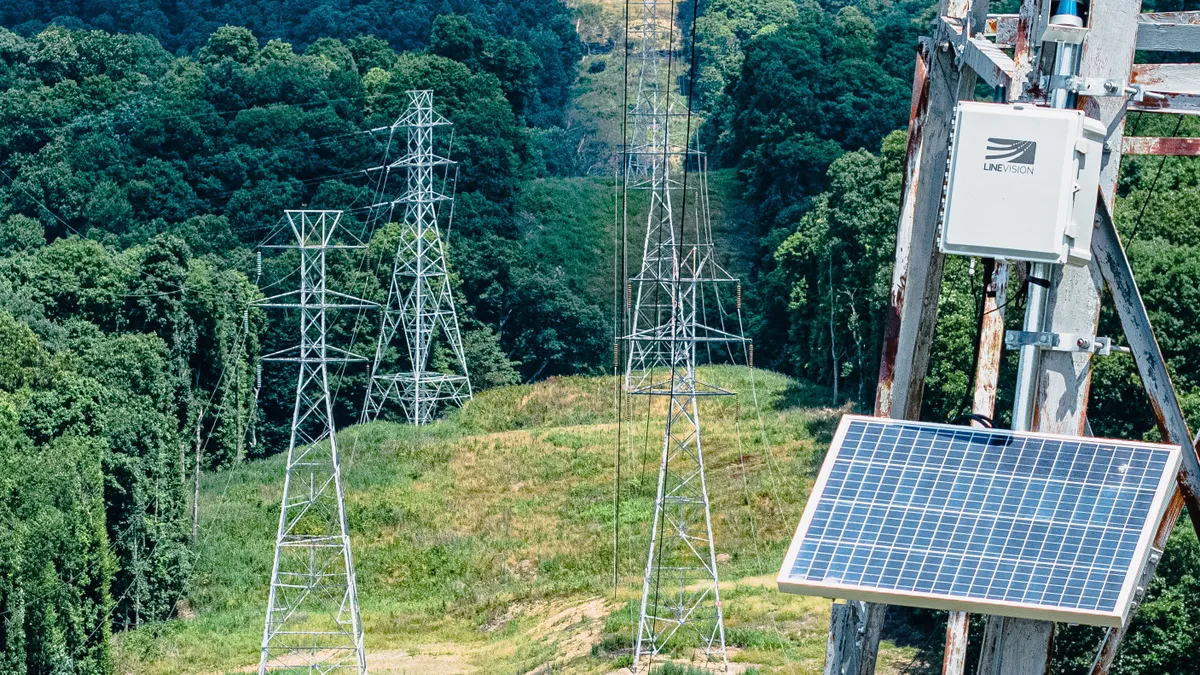Dive Brief:
- Duquesne Light on Thursday announced it would expand a partnership with LineVision after finding the company’s dynamic line rating, or DLR, sensors helped to boost capacity on some transmission lines in southwestern Pennsylvania by about 25%.
- DLR technologies utilize real-time temperature and wind speed data to determine the carrying capacity of transmission lines, rather than relying on static assumptions. Federal regulators are considering requiring transmission planners to consider DLR and other advanced power flow control devices as part of their planning.
- Duquesne Light is currently using LineVision sensors on 345kV lines, but said it will now deploy additional sensors to monitor 138kV transmission lines.
Dive Insight:
Additional transmission capacity will be essential to enabling the clean energy transition, and utilities are looking for ways get more out of lines that already exist.
Dynamic line rating sensors “provide us the actual intelligence in the field,” Elizabeth Cook, general manager of advanced grid solutions at Duquesne Light, said. “Having this level of visibility into the performance of our network helps us ensure a more responsive and flexible grid and arms us with the data to safely increase our lines' load.”
“We’re no longer using just one number for wind speed and varying numbers of temperatures based on a season,” Cook said in a video discussing the utility’s partnership with LineVision. “Now we can actually bring back the data, run it through the calculations of how we rate conductors, and show that dynamic variability of the wind and the temperature, which creates dynamic line ratings.”
LineVision representatives say the company works with about 30 utilities, including National Grid, Dominion Energy, Xcel and Sacramento Municipal Utility District.
National Grid has said LineVision’s dynamic ratings outperform static ratings up to 97% of the time and that by using DLR technologies the company could boost capacity on its transmission lines up to 45% over static ratings.
DLR “can help utilities enable their customers to meet ambitious climate goals sooner by offering accurate, real-time data on the available transmission capacity,” LineVision CEO Hudson Gilmer said in a statement.
The Federal Energy Regulatory Commission in February launched an inquiry into whether dynamic line ratings “would help ensure just and reasonable wholesale rates by improving the accuracy and transparency of line ratings.” The commission is considering requiring transmission planners to more fully consider dynamic line ratings and advanced power flow control devices as part of their planning.
But DLR technology will not obviate the need for additional new transmission, according to PJM Interconnection. The grid operator told FERC in Aug. 17 comments that while advanced power controls and dynamic ratings can be utilized in “select instances, to inform short-term horizon market efficiency planning solutions, they are not interchangeable substitutes for the need to develop new transmission infrastructure to address long-term transmission needs focused on reliability.”














